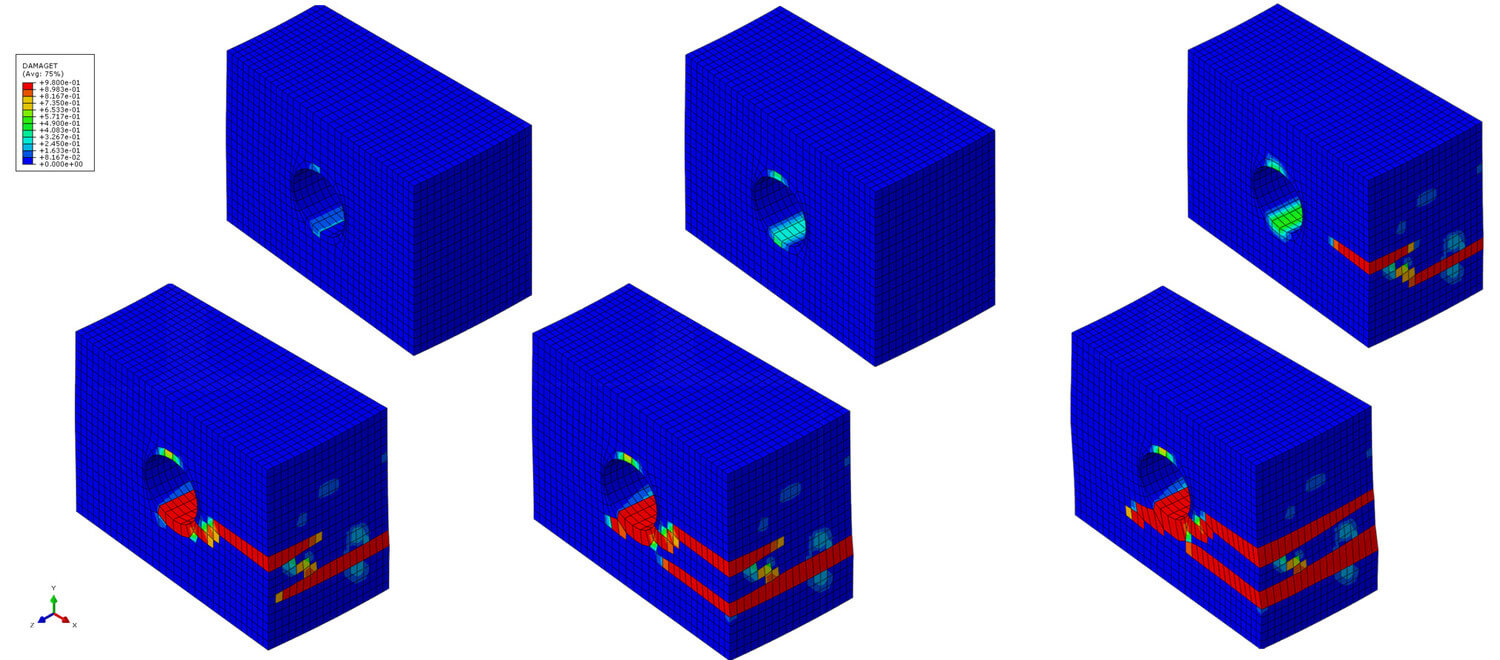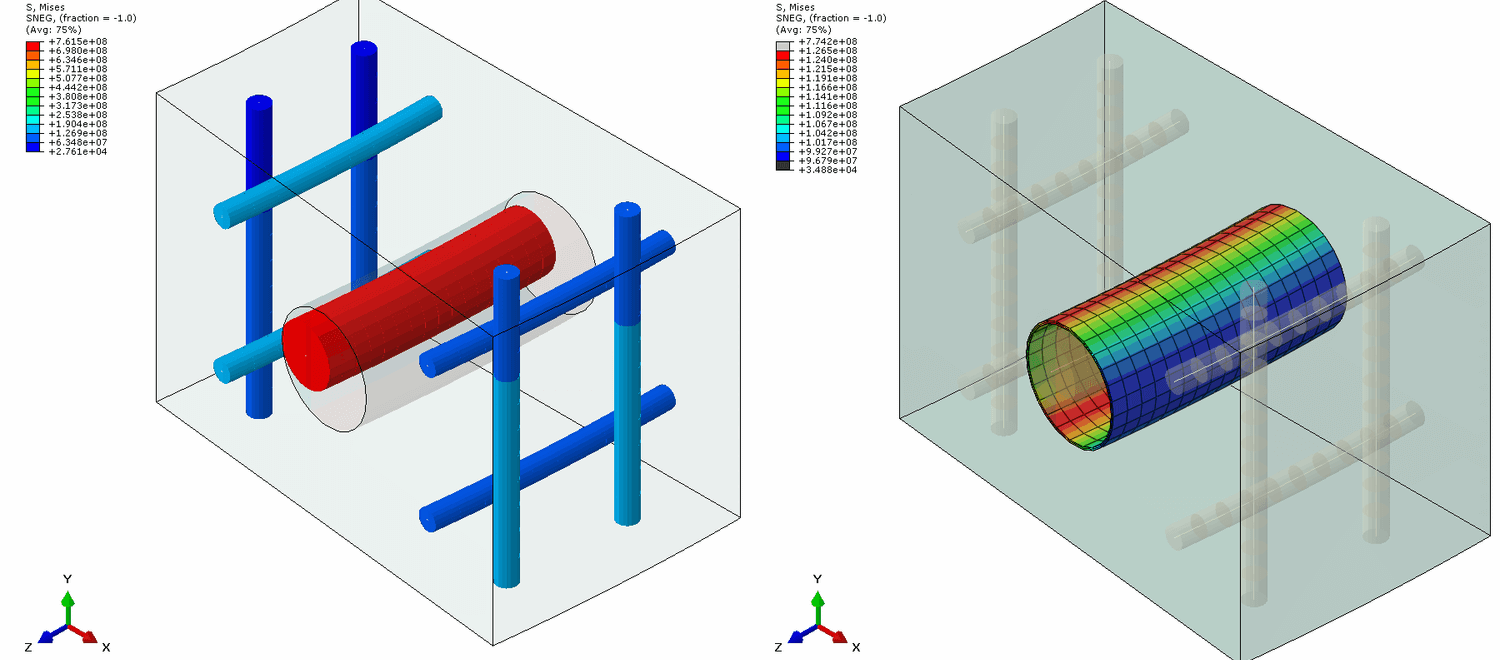Research
The effect of the reduction of concrete material strength and the deformations and stress level due to the non-uniform temperature distribution within a structural element such as a storage tank has a coupled negative effect on the post-tensioned concrete design. Heated strands embedded in a heated concrete element will elongate, hence reducing the post-tensioning force. This reduction will reduce the confinement of concrete, which added to the temperature gradient derived tension results in a greater level of damage and cracking. This study sets up a strongly non-linear model that attempts to account for all these effects. The results show that cracking localization grows surrounding the tendon duct, producing a sharp decrease in the post-tensioning force and a significant reduction of global stiffness.
The effect of high temperature in concrete has been addressed in a variety of ranges and applications.Concrete shows a significant reduction in its strength, both compressive and tensile, as well as in its stiffness due to a decrease of the modulus of elasticity. Besides, fracture energy drops also with temperature increase, diminishing the ductility of the structural element.








